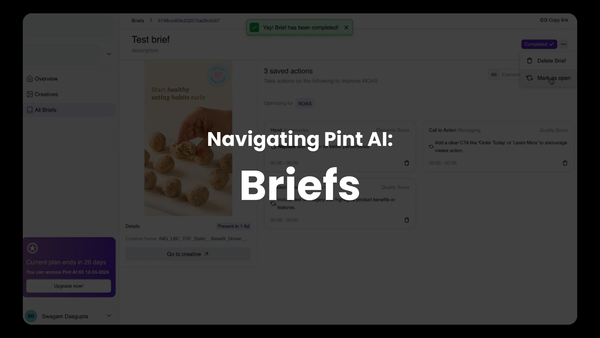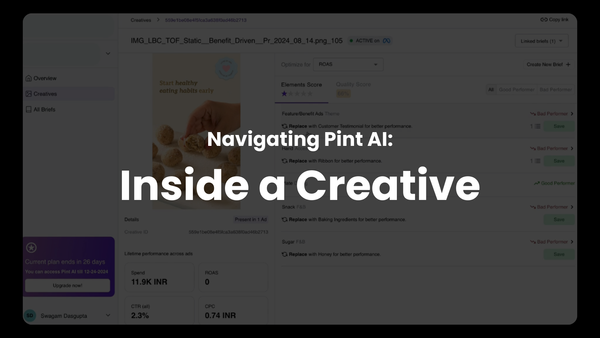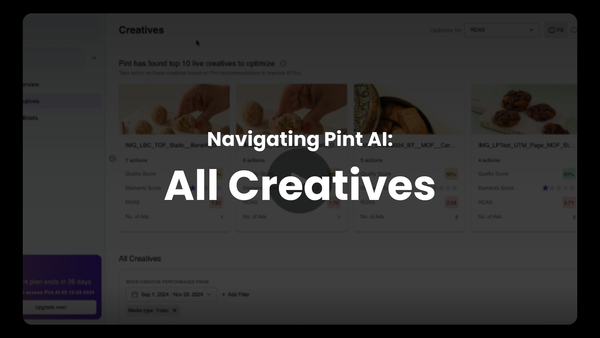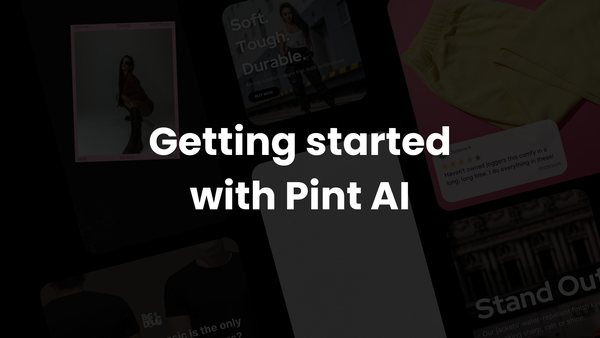How Creative Analytics Can Boost Your ROAS
Creative analytics is far more valuable in 2024 than it ever was; it provides a much needed growth lever for marketers, and if used well, can boost ROAS

For most media buyers, ROAS (Return on Ad Spend) is the ultimate metric on which their job is judged. With marketing budgets tightening and competition intensifying, achieving higher ROAS has never been more important.
One of the most powerful tools to help marketers optimize and improve their performance is the concept of creative analytics. As we move into 2024, leveraging creative analytics can provide actionable insights that drive significant improvements in ad performance and, consequently, ROAS.
Understanding Creative Analytics
In its most basic form, creative analytics involves the detailed analysis of the creative; unlike general digital ad analytics, the unit that we're measuring here is the creative itself.
As you go deeper into creative analytics, you can begin to dig into the specific elements within the creative that impact campaign performance. By dissecting components such as images, colors, text, and calls-to-action, marketers can identify what works and what doesn’t.
This granular approach allows for the continuous optimization of ad creatives, leading to more effective campaigns and higher ROAS.
How Can Creative Analytics Boost ROAS?
Data-Driven Decision Making
Creative analytics provides a wealth of data that can be used to make informed decisions about your ad creatives. By analyzing which elements drive the most engagement and conversions, you can focus your resources on what works best.
For instance, if data shows that ads with a particular color scheme or imagery perform better, you can replicate these successful elements across your campaigns.
Example: A fashion retailer might find that ads featuring models looking directly at the camera have higher engagement rates. By using this insight, they can design future ads that utilize this element, improving overall ad performance and ROAS.
Personalization and Targeting
With creative analytics, you can tailor your ad creatives to better resonate with your target audience.
By understanding the preferences and behaviors of different segments, you can create personalized ads that are more likely to convert. This level of customization can significantly boost engagement and ROAS.
Example: A tech company targeting both B2B and B2C segments can use creative analytics to determine that B2B audiences respond better to data-driven graphics, while B2C audiences prefer emotional storytelling. By tailoring their creatives accordingly, they can maximize the effectiveness of their campaigns.
Continuous Optimization
Creative analytics enables ongoing testing and optimization of ad creatives. By continuously analyzing performance data, marketers can make iterative improvements to their ads.
This agile approach ensures that your campaigns remain effective over time, adapting to changing market conditions and consumer preferences.
Example: An e-commerce brand might use A/B testing to compare different versions of an ad. By analyzing the results, they can identify the highest-performing version and use it as a template for future ads, continually refining their approach to improve ROAS.
Identifying Creative Fatigue
One of the challenges in digital advertising is creative fatigue, where ads lose their effectiveness over time as audiences become overexposed to them.
Creative analytics can help identify signs of creative fatigue early, allowing marketers to refresh their creatives before performance declines.
Example: A D2C skincare brand might notice a drop in engagement rates for a particular ad creative after several weeks. By using creative analytics, they can pinpoint the cause and introduce new creative elements to keep the audience engaged, thus maintaining or even improving ROAS.
Enhanced Reporting and Insights
Creative analytics tools often come with advanced reporting features that provide deeper insights into ad performance.
These reports can highlight trends and patterns that might not be immediately apparent, offering a strategic advantage in optimizing ad spend.
Example: A financial services company could use detailed reports from creative analytics to identify that ads featuring testimonials from satisfied customers perform better during certain times of the year. By capitalizing on these insights, they can allocate their budget more effectively, increasing ROAS.
Real-Life Examples and Case Studies
- Nestlé
Nestlé revamped its marketing strategy by adopting a digital-first approach with CreativeX technology. By adhering to nine creative best practices and automating real-time performance measurement, Nestlé achieved a 66% increase in ROAS for high Creative Quality Score (CQS) ads on Meta platforms. - Starbucks
Starbucks leveraged sophisticated analytics to overhaul its loyalty program. By analyzing purchase patterns and customer preferences, Starbucks tailored personalized rewards and offers. This data-driven approach led to a 20% increase in loyalty program membership and a 15% rise in customer visit frequency. - Lenskart
Lenskart, an eyewear retail chain, aimed to expand its market presence in Singapore. By utilizing creative analytics and targeted ad campaigns, Lenskart achieved a 498% increase in total revenue, a 66% rise in conversion rates, and a 482% boost in new customers.
Tools and Technologies for Creative Analytics in 2024
As the demand for creative analytics grows, a variety of tools and technologies have emerged to support marketers in their quest for higher ROAS. These tools offer robust analytics capabilities, user-friendly interfaces, and integration with other marketing platforms.
Pint AI
Pint AI provides a detailed analysis of creative elements and their impact on conversions, offering actionable recommendations for optimization. It uses machine learning to identify patterns and predict which creative elements will perform best, helping marketers make data-driven decisions.
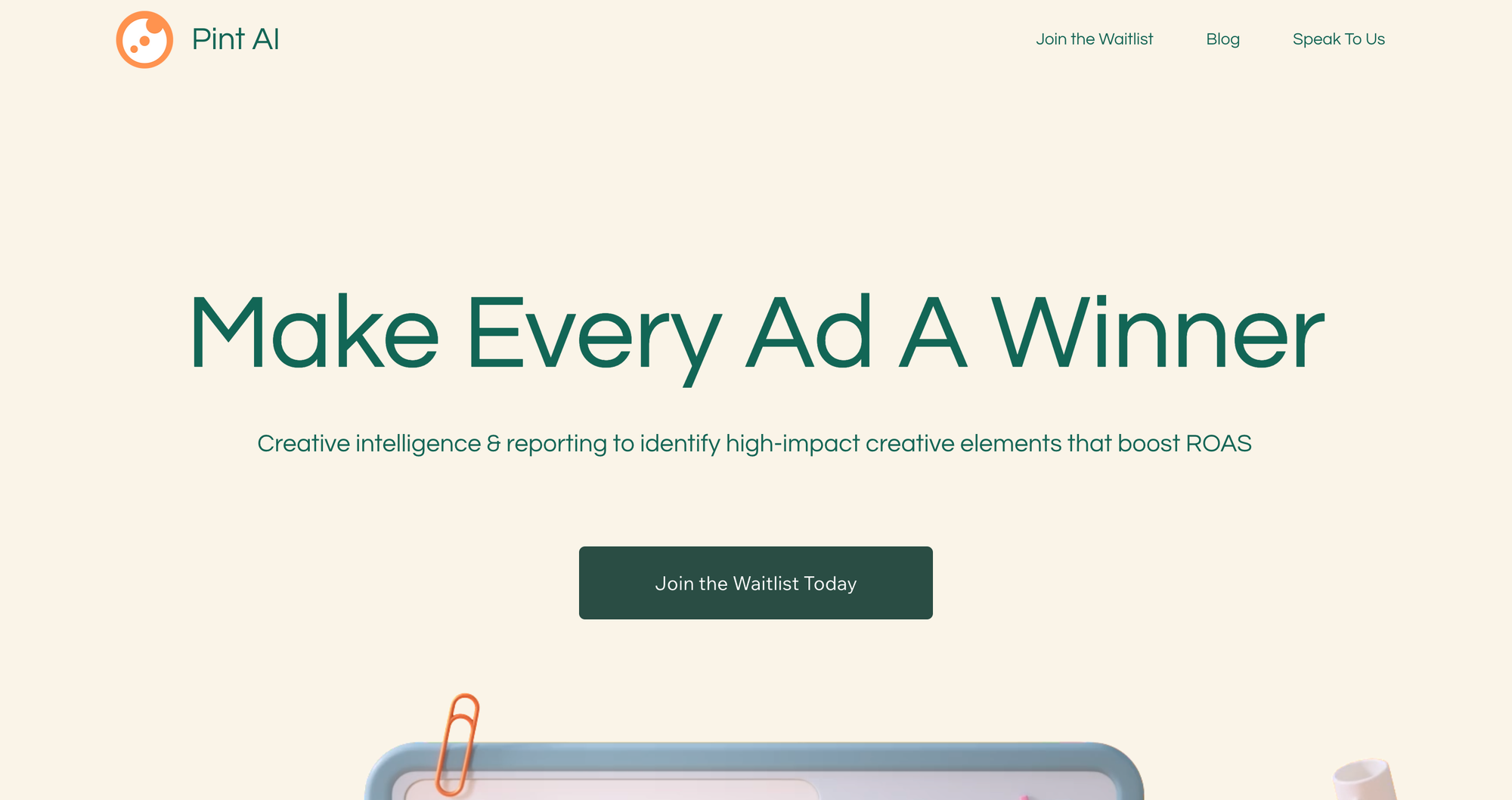
Motion App
Motion App specializes in creative performance analysis. It offers insights into various aspects of ad performance, including engagement rates, conversion rates, and audience interactions, enabling continuous optimization.
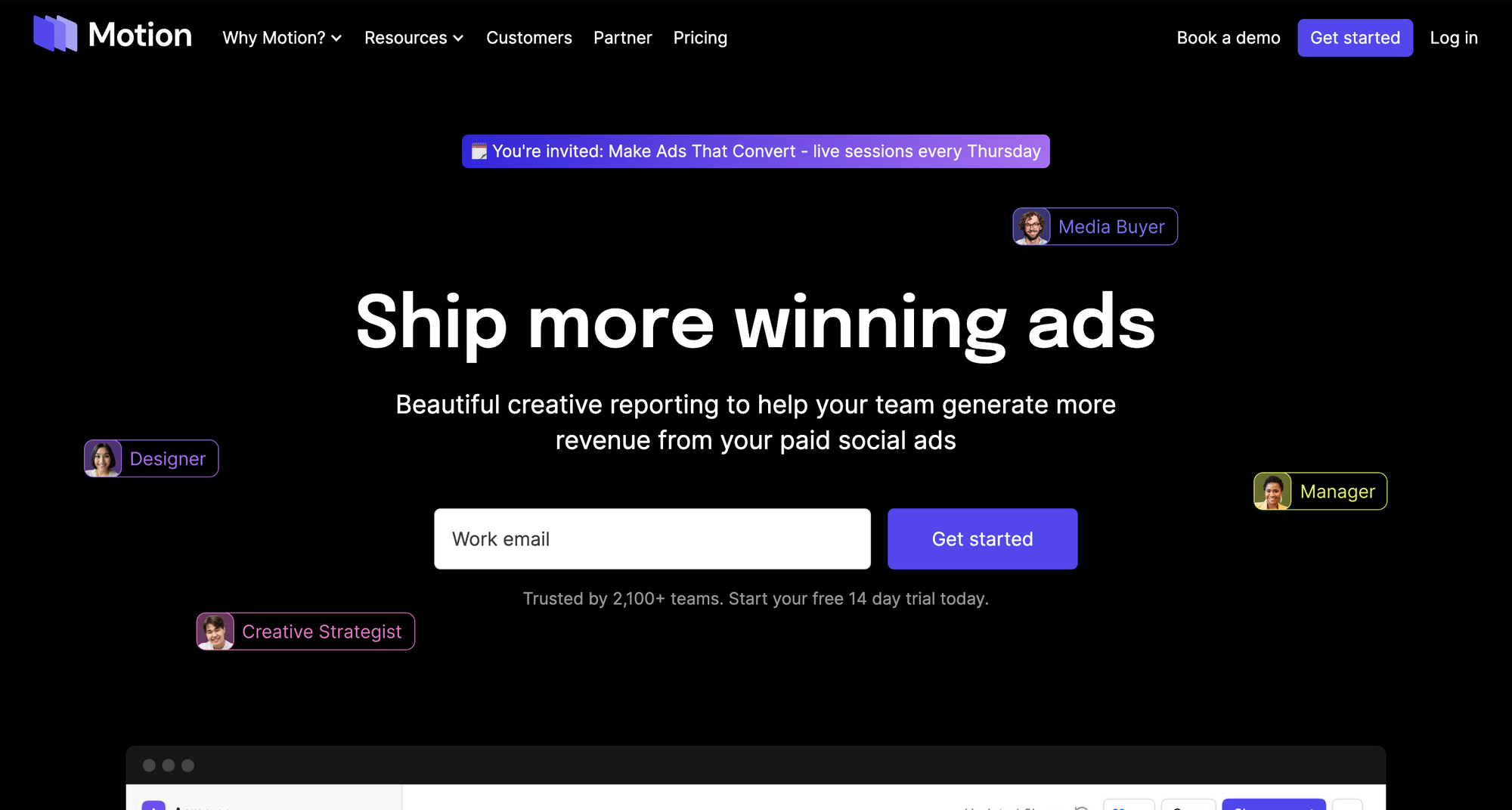
Vidmob
Built for enterprises, VidMob is a creative analytics platform that uses AI to provide detailed insights into the performance of ad creatives. VidMob’s platform offers recommendations for optimizing creatives, enabling marketers to enhance engagement and improve ROAS. By integrating with major advertising platforms, VidMob helps marketers make data-driven decisions to refine their ad strategies.
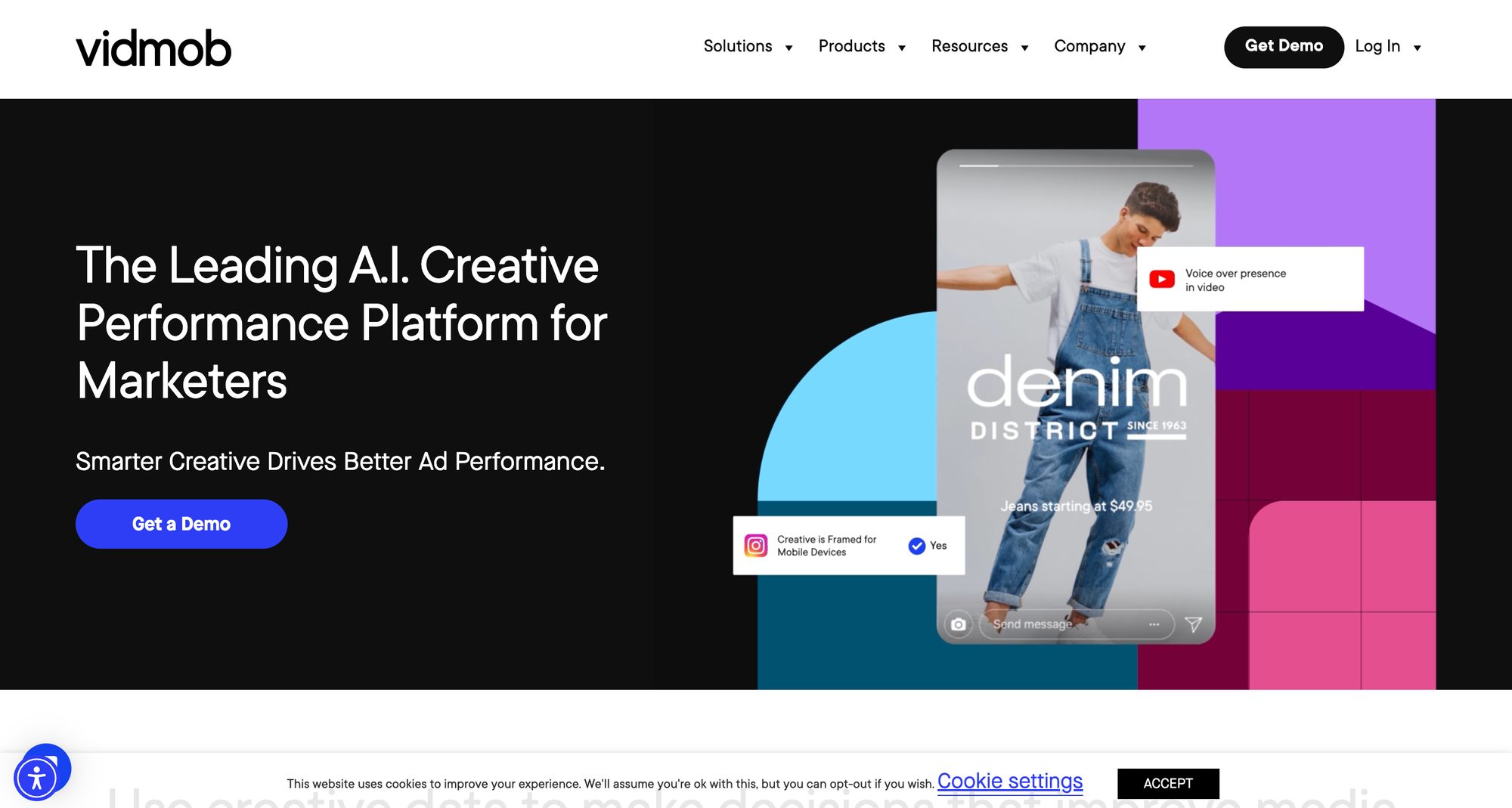
Implementing a Long-Term Strategy
To ensure that your ad campaigns remain effective over time, it's crucial to develop a long-term strategy for maximizing ROAS through creative analytics. Here are some steps to help you implement such a strategy:
- Set Clear Goals
Define what you want to achieve with your ad campaigns, such as increasing brand awareness, driving website traffic, or boosting sales. Clear goals will help you measure the success of your efforts and make necessary adjustments. - Monitor Performance Metrics
Regularly track key performance indicators (KPIs) such as CTR, conversion rates, CPA, and ROAS. Monitoring these metrics will help you identify trends and areas for improvement. - Create a Content Calendar
Plan your ad creatives in advance by creating a content calendar. This will help you ensure a steady flow of fresh and engaging content, preventing the risk of creative fatigue. - Collaborate with Creative Teams
Work closely with your creative teams to develop new concepts and ideas. Encourage brainstorming sessions and foster a culture of innovation to keep your ad creatives fresh and exciting. - Utilize Feedback Loops
Establish mechanisms to gather feedback from your audience, such as surveys or social media interactions. Use this feedback to refine your ad creatives and ensure they resonate with your target audience. - Invest in Training and Development
Keep your marketing and creative teams updated with the latest trends and techniques in digital advertising. Investing in training and development will help your team stay ahead of the curve and continually produce high-quality creatives.
Conclusion
In 2024, creative analytics will be a cornerstone of successful digital marketing strategies. By leveraging data to optimize ad creatives, personalize targeting, and continuously improve performance, marketers can achieve higher ROAS and drive better results from their campaigns.
Understanding the causes and signs of creative fatigue is the first step in addressing it, and real-life examples provide valuable insights into how successful companies have overcome this challenge.
By adopting these best practices, you can maintain high engagement levels, improve ROAS, and achieve long-term success in your digital advertising efforts.


